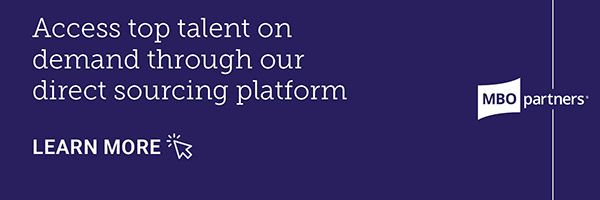Benefits and Challenges of Building an International Contingent Workforce

Key Points
Expanding a contingent workforce overseas has become increasingly important for companies to maintain agility and competitiveness.
As businesses go across borders with contingent labor, the complexities of managing an international workforce increase dramatically.
Nicole Cieslicki, Senior Director of International Services for MBO Partners, shares insights from her experience working with clients' global workforces.
Expanding your contingent workforce internationally has become increasingly important for companies to maintain agility and competitiveness. However, as businesses expand their operations across borders, the complexities of managing this workforce internationally increase dramatically. The challenges can be daunting, from navigating diverse legal frameworks to cultural nuances.
Nicole Cieslicki, a seasoned professional and the Senior Director of International Services for MBO Partners, plays a pivotal role in MBO’s global expansion strategy. Her expertise extends to managing MBO’s international offering, which enables MBO’s clients to engage talent from around the world.
Whether you’re a startup venturing into new markets or an established multinational optimizing your global talent strategy, Nicole’s insights are invaluable for companies considering international expansion.
What are some of the benefits of expanding your contingent workforce to include international talent?
It’s important to find the best independent talent and not limit the search to a certain geographical area. International talent brings a diverse viewpoint and often great opportunities to leverage costs. For me, a big benefit is getting a different viewpoint and seeing new ways of doing things.
What are some key considerations when hiring people from different countries?
You need to know which countries are off limits from a US perspective—any of the sanctioned countries where we’re forbidden to do business, as well as the countries that are generally high from a corruption and a fraud index. The US Department of Treasury’s Office of Foreign Assets Control maintains a list of countries under US sanctions.
Another thing to consider is where the market is going from a global perspective. You want to think about where the talent is available, who speaks English, and which universities are turning out the skill sets you need. Further, be aware of shifting locations of high-value talent. For example, India was a hotbed for IT resources for some time, but now companies are tapping Latin American independents for those skills.
Where have companies seen significant success in their approach to working with international talent?
Using an outside vendor to manage this for larger companies typically works well, especially in the contingent space. I also know of companies that manage in-house with cross-functional regional hubs. They draw on experts from legal, tax, and HR functions.
Small to mid-size companies work with specialized law firms or tax advisors and with service firms that have the global reach to support them.
What should you be considering from a legal standpoint?
A key consideration is tax risk. When building a global workforce and examining tax risk, people often say, “Oh, we’re hiring an independent contractor from there, so we don’t need to worry because they’re responsible for their taxes.” This is way too simplistic. Depending on how the contract is structured, the country it’s in, and a bunch of other factors, there could be tax risk for the company. It’s critical to ensure that there isn’t such risk for the company.
What should you consider when thinking about cultural differences?
This is a big one. Part of working with a global workforce is having different viewpoints. You need to be willing to accommodate and celebrate those differences. You want to work to understand how people communicate, their level of English fluency, and navigate the nuances of the language.
Any last thoughts?
Time zones. I’ve seen many companies go international without thinking about time zones. Time difference impacts communications, deadlines, and other workplace activities. For example, when you’re working with people in Australia or New Zealand, they’re as many as 14 hours ahead of you. If you send a message in the afternoon, they won’t see it and get back to you until the next day. Time-related expectations need to be agreed upon before things kick off.
Related Posts
Trending
Subscribe to our
blog
Get a weekly email of our latest posts sent straight to your inbox
Learn more about the MBO Platform
FOR INDEPENDENT
PROFESSIONALS
Start, run, and grow
your independent business with MBO
FOR
ENTERPRISES
Engage, scale, and optimize
your independent workforce



